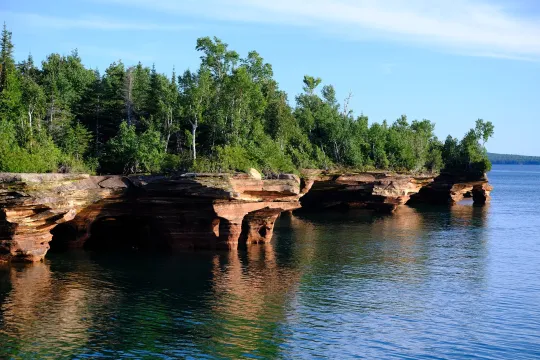Active banners: 1 Visible banners: 1
Banner ID: 4 Has content: true
Let's create continuous conversations about climate change education: Spreading the Sediment of Science!
Minisan (Islands)
Provided by: Minisan |Published on: September 20, 2023
Videos
9101112
Synopsis
- This interactive map examines the numerous ecosystems in or near Wisconsin's Apostle Islands and integrates the traditional Ojibwe ecological knowledge about how climate change and human activity are impacting these ecosystems.
- Students can click on various locations on the map to bring up ecological information, view and listen to the Ojbiwe names for various items, see a 360-degree view of the location, view maps, charts, and videos, and learn something unique about each location.

Subjects: Social Studies, Biology, Earth and Space Sciences, Other
Authors: Minisan
Region: North America, USA - Midwest, United States, Wisconsin, WI - Northwoods (CESA 9, 10, 11, 12), Michigan
Languages: English
Teaching Materials
Positives
- Each location contains information about the physical characteristics, plants, animals, and human connections associated with them.
- This site is filled with engaging pictures and useful information about the Ojibwe culture and living environment.
Additional Prerequisites
- You can use the "Ecosystems" tab to navigate all 12 locations on the map.
- The other tabs along the top provide additional information about the Ojibwe language and ecological knowledge, a user guide, and acknowledgements.
Differentiation
- Students can use this site as a basis for an informative essay about how climate change impacts ecosystems in the Upper Midwest.
- Teachers can use portions of this resource as a conceptual introduction to biodiversity, the importance of biodiversity, and how climate change is impacting biodiversity.
- This site can enhance a classroom discussion on how "traditional ecological knowledge" can improve our understanding of specific ecosystems and how they are affected by climate change.
- Portions of this resource can support a classroom discussion on how climate change increases the severity and frequency of extreme weather events.
Scientist Notes
Teaching Tips
Standards
Resource Type and Format
All resources can be used for your educational purposes with proper attribution to the content provider.
Teaching Materials
Educator Support
My Account



